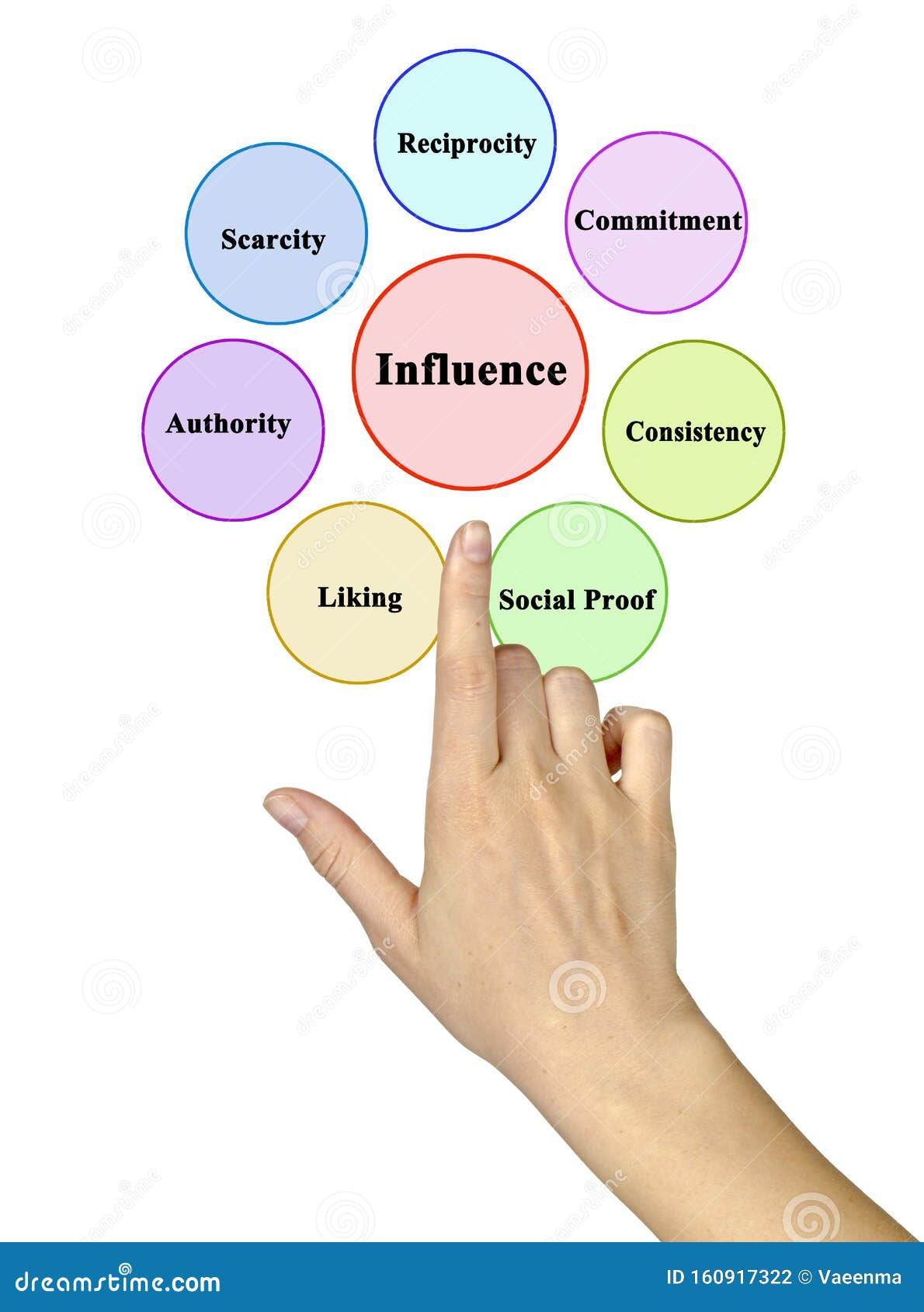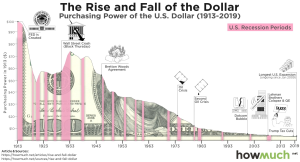The influence of preferences shapes our identities and choices in profound ways, although we often perceive them as uniquely our own. Behavioral scientists indicate that social norms and personal experiences significantly impact our consumer behavior, embedding themselves into our likes and dislikes. For example, music preferences formed during adolescence tend to stick with us throughout life, creating a nostalgic connection to that period. Similarly, brand loyalty can be a reflection of familial tastes or cultural trends rather than an impartial decision. Understanding these influences can unravel the complexities behind why we favor certain products or styles over others.
The dynamics of individual choices are deeply intertwined with external factors, effectively highlighting the collective impact on decision-making processes. Preferences, dictated by social influences and cultural paradigms, guide how consumers interact with brands and products alike. From the music we cherish to the culinary delights we savor, these choices often reveal underlying connections to societal expectations. As we navigate through various consumer landscapes, our understanding of brand loyalty or even the appeal of particular styles showcases the intersection of personal inclinations and shared norms. These layers of influence emphasize the evolving nature of our preferences as shaped not just by individual experiences but also by the broader community.
The Impact of Social Norms on Personal Preferences
Social norms play a pivotal role in shaping personal preferences, often driving what individuals perceive as acceptable or desirable. From childhood, we are exposed to the tastes and habits of our families and peers, which paints a broad canvas of our preferences. For example, take music preferences, which are notably formed during our teenage years; peer influence can lead to a bias toward certain genres or artists deemed popular within one’s social circle. This inclination towards conformity showcases how social norms effectively guide our choices, whether it’s the music we listen to or the products we buy.
Moreover, social norms extend beyond mere tastes, influencing deeper aspects of consumer behavior. When individuals perceive a product as trendy or favored by others, their likelihood of purchasing it increases significantly. Consider the rise of branded clothing; people often select these items not solely for their quality but also due to the social validation associated with them. As a result, personal preferences are reinforced by the collective mindset of a community, leading to brand loyalty that is cultivated through habitual reinforcement of these societal standards.
Understanding Consumer Behavior Through Preferences
Consumer behavior is a fascinating area that hinges on the preferences of individuals in varying contexts. As we navigate through choices, our underlying values guide our decision-making process, influencing everything from the brands we support to the products we purchase. For instance, many consumers feel a strong loyalty towards brands that align with their personal beliefs or social identities. This is often seen in how individuals gravitate towards eco-friendly products or brands that support social causes, reflecting their values in every purchase.
Importantly, consumer behavior can be reactive rather than solely influenced by personal preference. When individuals make choices in a vacuum, they often remain unaware of outside influences such as marketing strategies or peer recommendations. The intricate interplay between attitude and behavior can lead to a cycle where buying a particular product shifts personal preferences over time; a phenomenon seen widely in industries like beauty and technology. Ultimately, recognizing the motivating factors behind consumer behavior provides invaluable insights for brands looking to tailor their strategies to meet the evolving demands of their target audience.
The Formation of Music Preferences and Their Long-term Effects
Music preferences often emerge during formative years, significantly influencing individual identities and cultural connections. During adolescence, individuals tend to form emotional bonds with specific genres or artists, which leaves a lasting impact on their social interactions and self-perception. This formative phase is critical as it shapes how individuals express themselves and relate to others. Consequently, music preferences can often serve as markers of identity, influencing everything from fashion choices to social affiliations.
Moreover, the lasting effects of these preferences extend beyond mere nostalgia. As people age, the music they cherished during their teens often remains a cornerstone of their cultural engagement, influencing their current tastes. Researchers have discovered that nostalgia can enhance the enjoyment of music, making long-held preferences more diverse over time. This transformative journey highlights how music shapes personal tastes and reflects a larger spectrum of social influences, contributing richly to individual and collective identities.
Brand Loyalty and the Influence of Preferences
Brand loyalty is often a product of ingrained preferences developed through years of exposure and social reinforcement. When individuals consistently choose one brand over another, it reflects more than just taste; it demonstrates the influence of factors such as personal experiences, social validation, and even marketing tactics. For example, consumers may find themselves favoring a particular car brand not only for its performance but also for the identity it projects in their social circles.
Furthermore, the concept of switching costs highlights the barriers consumers face when considering a change in brand loyalty. When individuals invest time and emotional energy into their preferred brands—be it through technology, clothing, or food—they are likely to stick with these choices. This is particularly evident in markets where brand differentiation becomes pivotal; for instance, the decision to stay with a specific tech brand often requires navigating complex interfaces, leading to a reluctance to switch to competitors. Thus, brand loyalty is intricately tied to personal preferences shaped by both experiences and external influences.
The Role of Exposure in Shaping Preferences
Exposure to various products significantly influences personal preferences over time. From childhood through adulthood, our preferences are continually shaped by what we encounter in our environments—commercials, social media, peer choices, and even family traditions. For instance, someone raised in a household that values organic foods will likely have a preference for these products as they grow older, further perpetuated by societal trends favoring health consciousness.
This exposure extends to the digital sphere, where algorithms curate content based on past behaviors, introducing consumers to products that align with their developing preferences. The result is a highly personalized marketing environment that reinforces certain choices and nudges individuals toward particular brands or services. Therefore, the influence of exposure cannot be understated in its power to directly shape consumer preferences and behaviors.
How Personal Preferences Influence Decision Making
Personal preferences significantly influence decision-making processes, often dictating the outcome of various choices in both mundane and critical situations. Whether selecting a pizza brand or making a significant technology investment, the choices we make reflect our individual tastes and values. These decisions, however, are not made in a vacuum; they are often saturated with social influences, prior experiences, and external advertisements that nudge us toward particular brands or products.
Moreover, the decisions we make based on preferences can lead to cognitive dissonance when our choices are challenged. For instance, if we believe that our favorite coffee is the best but are presented with evidence suggesting otherwise, we may rationalize our choice to align with our established preferences. This psychological phenomenon underlines how deeply personal preferences shape not only our consumption habits but also how we interpret and react to conflicting information in our environments.
The Intersection of Identity and Preferences
Our personal identity is intertwined with our preferences, manifesting in everything we choose—from clothing and music to the brands we support. This intersection is particularly pronounced within social settings, where individuals often select items that reinforce their identity and resonate with their social circles. For example, someone who identifies with a hip and modern lifestyle may gravitate towards brands perceived as trendy or cutting-edge, thereby expressing their identity through their consumer choices.
Additionally, preferences can serve as tools for expression and belonging within communities. As people share or reject certain products based on collective social norms, these choices become part of a broader identity narrative. Within niche groups, individuals may find camaraderie in their shared tastes, creating subcultures that reinforce personal preferences as markers of identity. This relationship highlights the dynamic nature of preferences as they evolve through social validation and personal choice.
The Influence of Social Media on Personal Preferences
In today’s digital age, social media serves as a significant catalyst for shaping personal preferences. With curated feeds showcasing various brands and lifestyles, users are increasingly inclined to adopt trends that align with their social circles. Indeed, when a friend shares a post promoting a particular product, it can lead to an immediate influence on personal preferences, steering individuals toward choices that they believe reflect their identities and values. This influence showcases how closely connected social norms and personal preferences are in the realm of consumer behavior.
Furthermore, the interaction between personal preferences and social media can create a feedback loop, magnifying the importance of brand presence online. Companies harness this dynamic by tailoring their marketing strategies to resonate with the target audience’s online behavior. This results in a cycle where consumer preferences are continuously molded by social media interactions, further reinforcing brand loyalty and shaping future purchasing decisions. Thus, social media’s pervasive influence highlights its essential role in modern consumer culture.
Adapting Preferences in a Global Market
As consumers traverse the global market, they encounter an array of influences that can reshape their preferences profoundly. Cultural diversity introduces individuals to new brands, products, and styles, prompting shifts in personal choices. For instance, in travel, people often adapt their preferences to align with local customs, leading to a unique blend of global and local tastes. Such interactions reflect a broader tapestry of consumer behavior, demonstrating how preferences are not fixed but rather fluid and influenced by external exposure.
Moreover, globalization has resulted in mainstream products coexisting with localized alternatives, giving consumers the power to choose based on a broader spectrum of preferences. This amalgamation can lead to a hybrid identity where preferences are indicative of personal and social influences, further complicating brand loyalty. As consumers navigate this intricate web of choices, they find themselves balancing their established preferences with the enticing allure of new offerings, ultimately shaping a more diverse market landscape.
Frequently Asked Questions
What is the influence of social norms on personal preferences in consumer behavior?
Social norms play a significant role in shaping personal preferences in consumer behavior. They establish what is deemed acceptable or desirable within a society, affecting individuals’ choices from brands to music preferences. People often align their decisions with the trends and values upheld by their social circles, leading to a conformity that can skew perceptions of what one truly likes.
How do personal preferences develop through social influence?
Personal preferences are greatly influenced by social interactions and the environment around us. Our choices in products, music, or brands are often a reflection of the preferences of those we associate closely with. From childhood through adulthood, the tastes we develop are shaped by family, friends, and broader social contexts, which ultimately guide our consumer behavior and brand loyalty.
In what ways do social norms affect music preferences?
Social norms heavily influence music preferences, particularly during formative years. For many, the music they listen to in their teens becomes a benchmark for what they consider ‘the best.’ As social groups often share common tastes, these norms not only dictate what is popular but also create a shared identity around certain genres, artists, and trends, significantly impacting individual preferences.
Can consumer behavior reflect our personal identity and preferences?
Yes, consumer behavior often reflects interpersonal identity and preferences. Brands use targeted marketing to match products with consumers’ perceived identities. When we see ads for brands aligned with our tastes on social media, it reinforces our self-concept. This can lead to a quicker acceptance of brands that align with our chosen social identities, showcasing the strong interplay between personal preferences and consumer behavior.
How does brand loyalty develop through personal preferences?
Brand loyalty can develop from personal preferences influenced by various social factors. When consumers consistently choose a brand, it often stems from their positive experiences, social validation from peers, or a desire to align with a brand’s identity. Factors such as marketing strategies and peer reinforcement can also entrench brand loyalty, making it a complex interplay of preference formation and social influence.
What role does social influence play in shaping preferences for products like pizza or clothing brands?
Social influence plays a pivotal role in shaping preferences for products like pizza or clothing brands. Popular opinion, peer choices, and local trends can skew individual preferences, often leading to a phenomenon where people feel a strong association with products simply because they are part of a social norm. These influences can mask personal taste, creating a preference shaped by community rather than individual choice.
How can AI identify and influence consumer preferences based on social norms?
AI can identify consumer preferences by analyzing data patterns that reveal correlations often subconscious to the individual. By understanding behaviors and preferences related to social norms, AI enables marketers to target consumers more effectively. For instance, if data shows a consumer frequently buys hot dog buns, AI may predict and promote hot dogs, thereby leveraging social norms to influence purchase decisions.
How does switching cost affect personal preferences and consumer loyalty?
Switching costs significantly affect personal preferences and consumer loyalty. When changing brands or products requires substantial effort, such as adapting to new technology, consumers tend to remain loyal to their current choices, even if alternatives may be better. Lower switching costs, like changing pizza brands, often lead to more fluid preferences and a willingness to explore new options, reflecting on how preferences can evolve.
| Key Points | Explanation |
|---|---|
| Influence of Social Norms | Personal preferences are shaped in part by social norms and the choices of our family and friends. |
| Formative Years | Music preferences are often established during teenage years, impacting what individuals perceive as ‘the best’. |
| Product Choice Influences | Product choices can shape attitudes, often without our conscious awareness. |
| Marketing and Personalization | Companies use data to personalize advertisements, influencing consumer preferences. |
| Community and Subcultures | Preferences are often influenced by local norms and peer choices, creating various subcultures even for common items. |
| Switching Costs | The cost associated with changing preferences affects consumer loyalty; higher switching costs lead to more steadfast choices. |
Summary
The influence of preferences significantly shapes our personal choices and identities. Understanding how social norms, marketing tactics, and the community around us impact what we like—and how those preferences evolve over time—can help us become more aware of the unconscious biases affecting our decisions. Our tastes are not solely products of individual choices but are deeply intertwined with cultural contexts and social interactions.




